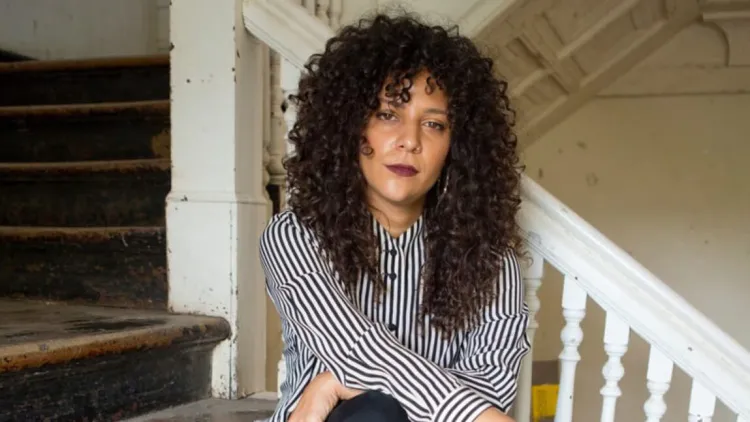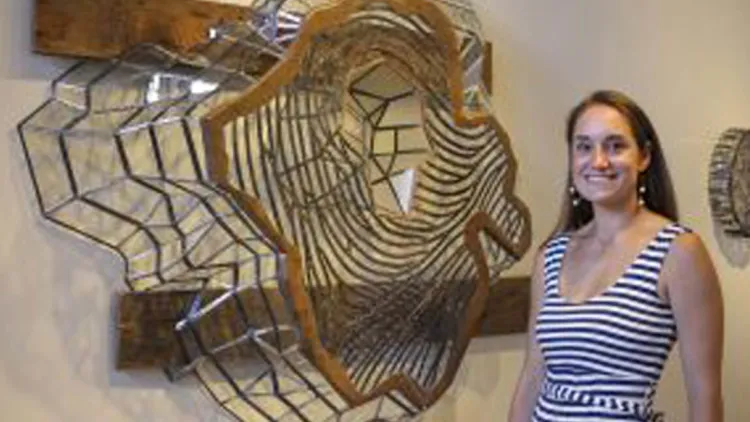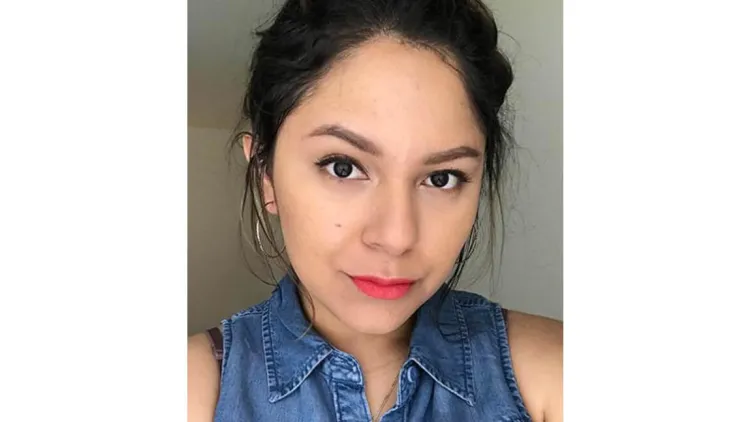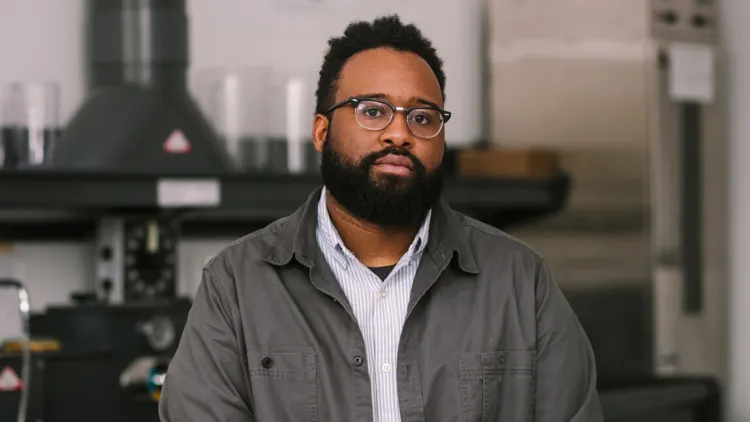Visiting Artists Bring New Perspectives to UVM...
The Mollie Ruprecht Fund for Visual Arts provides generous support for bringing artists and critics to visit the UVM Program of Art and Art History.
The Ruprecht Fund was established in 2011 by Bill Ruprecht, an alumnus of the program to honor his daughter, Mollie Ruprecht, who was also an art and art history major. Ruprecht visitors' creative work has often been integrated into the curriculum of our courses, and many of the visiting artists have exhibited their work in conjunction with their visits. The Ruprecht Fund has thus proven to be deeply beneficial to our teaching mission and public profile.
2023-24 Visiting Artists
| Adrianna Ault | LJ Roberts | Meg Lipke | Stacy Fisher |
| Andrew Ku | Lily Moebes | Rachel Eulena Williams | Sun You |
| Dan Habib | Lorenzo Triburgo | RaMell Ross | Željka Blakšić |
| Jennifer and Will from Juniper Creative Arts |
Past Visiting Artists
Sofia Cordova

Born in 1985 in Carolina, Puerto Rico, and currently based in Oakland, California, Sofía Córdova creates work that explores sci-fi as alternative history, the liberatory dimensions of dance music, colonial contamination, climate change, and migration. More recently, her work has focused on revolution—both historical and imagined—within the matrix of class, gender, race, late capitalism, and its technologies. She works across performance, video, sound, music, installation, photography, and occasionally, taxidermy. She is also one half of the music duo and experimental sound outfit XUXA SANTAMARIA.
Lorenzo Triburgo

Using an understated yet radical approach that includes portraiture, landscape, and studio practice, Lorenzo Triburgo reclaims this power for LGBTQ communities and other individuals traditionally ignored by media and popular culture or conquered by an outsider’s gaze. Working in collaboration with his subjects, Triburgo amplifies their voices to an audience that might otherwise ignore them or keep them at a safe aesthetic distance.
Triburgo has work in the permanent collection at the Portland Art Museum and has been published and written about in various web and print journals including PDN, Slate, The Huffington Post, and the website for The Transgender Studies Reader 2, edited by Susan Stryker and Aren Aizura, and published by Routledge. He holds a BA from New York University in Photography and Gender Studies and an MFA in Photography and Related Media from the School of Visual Arts.
Stefania Urist

Stefania Urist is a sculptor from Londonderry, VT. She will present her new exhibition at UVM's Colburn Gallery in Williams Hall on 3/29.
Hallow(ed) is a dystopian forest of felled tree stumps made of cardboard boxes and fossilized organic materials. An immersive installation, Hollow(ed) addresses how modern society destroys the environment through the commodification of nature.
The body of work explores the “ghosts” of fallen trees and the humans which deforested them, and the tree rings are physical expressions of a long, slow growth process that trees experience and the process of industry and capitalism’s impress on the environment.
Most of Urist’s work is informed by environmental research about trees and forests, in which she exemplifies the relationship between industry, technology, and humankind. She explores tree rings, wood grain, and milling patterns across mass-produced materials like paper and glass to show the direct or indirect lineage of trees in their construction.
Nic Collins
Nic Collins is an early adopter of microcomputers which he uses along with electronic circuitry, and acoustic and hybrid electro-acoustic instruments for live performance. His book Handmade Electronic Music – The Art of Hardware Hacking has influenced emerging electronic music around the world. Collins is also the editor-in-chief of the Leonardo Music Journal, a research fellow at the Orpheus Institute in Belgium, and a faculty member in the Department of Sound at the School of the Art Institute of Chicago. Born and raised in New York City, Collins lived in Amsterdam working as a Visiting Artistic Director of STEIM and in Berlin as a DAAD composer-in-residence. Collins comes from a family of art and architectural historians.
Constanza Salazar

Constanza Salazar is an art historian and theorist based in New York City. A Ph.D. candidate at Cornell University, Salazar’s research focuses on artists’ responses to advanced technologies like the internet, surveillance, biotechnology, and artificial intelligence. She examines artists’ resistance to these technologies through performance, hacktivism, robotics, and more. Salazar holds an M.A. in Art History and Visual Culture from the University of Guelph and a B.F.A. from the University of Waterloo and has presented her research internationally.
Salazar gave her lecture "Embodied Digital Dissent: Coopting Technologies in Art, 1990s-Present" to Sara Garzon's Issues in Contemporary Art and Jenn Karson's Graphic Design classes on November 18, 2022.
Pixy Liao

Pixy Liao is an interdisciplinary artist born and raised in Shanghai, China and currently based in Brooklyn, NY. The artist presented a public talk at UVM's Williams Hall on Wednesday, March 2.
Liao's photography is defined by deep depth of field, bright colors, and intimate staging. Her most prolific work “Experimental Relationship” (2007-ongoing), from which the above image comes, captures Liao with her boyfriend.
Liao says the series ”[explores] the alternative possibilities of heterosexual relationships...What will happen if man and woman exchange their roles of sex and roles of power? Because my boyfriend is Japanese and I am Chinese, this project also describes a love and hate-relationship.”
Liao holds an M.F.A. in photography from the University of Memphis and has participated in exhibitions and performances internationally.
Zora J. Murff

Zora J Murff is an artist and educator living in Arkansas. He is Black; therefore, he is. The photographer gave his talk Topic 4: Violent Images (aka, that ideological North), on Wednesday, March 16.
Murff’s monograph, True Colors (or, Affirmations in a Crisis), was recently published by the Aperture Foundation. In True Colors he constructs an incisive, autobiographic retelling of the struggles and epiphanies of a young Black artist working to make space for himself and his community.
Since leaving social work to pursue photography over a decade ago, Murff’s work grapples with the complicit entanglement of the medium in the histories of spectacle, commodification, and race, often contextualizing his own photographs with found and appropriated images and commissioned texts.
True Colors continues that work, expanding to address the act of remembering and the politics of self, which Murff identifies as “the duality of Black patriotism and the challenges of finding belonging in places not made for me—of creating an affirmation in a moment of crisis as I learn to remake myself in my own image.”